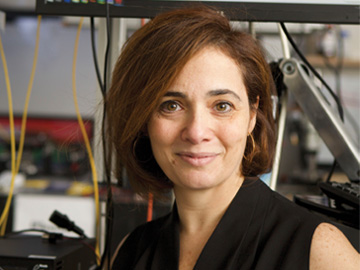
I have now been involved with optics and photonics for some 30 years. A particularly satisfying part of that journey has been seeing optical technology’s ever-increasing role in enabling and expanding things we take for granted—seamless global communications; laser-based manufacturing; clean, cost-effective energy and illumination. Emerging technologies ranging from integrated lidar to silicon photonics to metamaterials to quantum information could make even larger, spectacular gains as the 21st century continues to unfold.
Yet strong as the prospects seem, there’s a looming threat to realizing them: the need to ensure a robust, qualified workforce in optics and photonics. As this month’s OPN cover story suggests, the potential shortfall in photonic technicians—the skilled workers who assemble, set up, test and maintain optical equipment—is especially troubling.
The technician shortage in optics and photonics is hardly news. But the field’s recent growth has given the problem a new urgency. In the United States alone, according to a 2021 study from AIM Photonics, some 2,200 new job openings for qualified engineering technicians could emerge each year through the end of the decade. That number vastly outstrips both the current educational resources for training such personnel and the pipeline of interested students.
The workforce challenge extends beyond the technician shortage. Several start-up companies I am involved with, for example, report ongoing difficulty in recruiting qualified optical engineers. The rapidly expanding horizons of quantum technology have created an imperative to define and staff a new “quantum workforce.” And the problem crosses international boundaries. In its 2021–27 strategic agenda, the European technology platform Photonics21 cited appropriate academic and vocational training and skills development as a key “pan-European” challenge.
Fortunately, our community is taking concrete steps to overcome such challenges. Those steps include the efforts of dedicated individuals running and teaching at some 20 community colleges in the United States that provide technician training. A new program funded by the US Department of Defense, AmeriCOM, is putting significant funding in play to expand the number of such programs, especially in precision optics. In Europe, initiatives such as the training and reskilling efforts of PhotonHub Europe and the career hub Carla are expanding career education in photonics at multiple levels.
These efforts, and others, deserve the support of everyone in the optics and photonics community. They offer an excellent example of what academic–industry collaboration can do to move our field forward.
Finally, I’d like to stress one other, crucial part of building tomorrow’s workforce—starting young. Outreach to high-school and even elementary-school students, to acquaint them with the power and excitement of light-based technology, can spark a lifelong interest and commitment. Optica’s student chapters, working through initiatives such as the International Day of Light, have been particularly effective emissaries for light science for these important young audiences. I look forward to the day when, confronted with the inevitable question “What do you want to do when you grow up?,” the brightest grade-school students will reply, “I want to do photonics!”
—Michal Lipson,
Optica President
View Chinese, French, German, Japanese and Spanish translations of this message:
